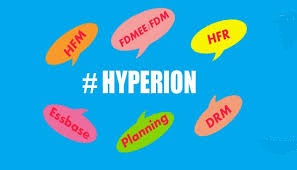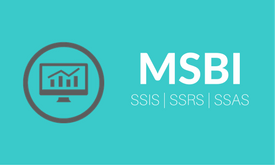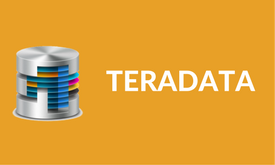Hyperion Training in Chennai - Hyperion Certified Consultant in Essbase, HFM and Planning
Hyperion is a Business Intelligence (BI) and Business Performance Management (BPM ) Tool. Its the market leader in Financial, Operational and Strategic Planning. It has applications for Planning, consolidation, scorecarding, reporting, dashboards, Analysis, Workspace, Master Data Management and Foundation. There is a sufficient demand in the industry for essbase consultants. Hyperion Training in Chennai is equipped with well trained human resources, Real-time Corporate Trainers, modern infrastructure - hardware and software resources.
About Our Trainer
As a Trainer, Mr.Ram work as a BI Consultant for a Leading MNC in Chennai with 12+ years experience in both software development and training and very keen in delivering the BEST Cognos Business Intelligence Trainings. The trainee can simply depend on Ram for his excellent Real Time examples on every part of the concept paired with in-depth discussions and Datawarehouse recommendations. All sessions are completely practical and very much interactive.
Specialties
ETL & Data Warehouse Consulting using Cognos and other ETL tools. 8+ years Cognos experience Including Version 10
Please Note: Trainer is a Realtime Expert and Currently working for one MNC. Hence all the Training Schedules (timings) are fixed. No One - One Trainings can be provided as of now.
Want a free career Advice or any career related queries? Reach him by
+91- 8939915572
Course Curriculum
Curriculum
Hyperion Modules:
- · Hyperion Financial Manangement (HFM)
- . Hyperion Financial Reporting (HFR)
- · Hyperion Interactive Reporting (Brio)
- · Hyperion Essbase
- · Hyperion Web Analysis
- · Hyperion Planning
- · Hyperion Spread Sheet Services
- · Hyperion Master Data Management (MDM)
- · Hyperion Financial Data Quality Management (FDQM)
- · (1Z0-264) Hyperion Essbase 9.3 Developer
- · (1Z0-265) Hyperion System 9 BI+ 9.3 Administrator
- · (1Z0-271) Hyperion Financial Management 9.3 Administrator I & II
- · (1Z0-272) Hyperion Planning 9.3 Administrator I & II
- · (1Z0-531) Oracle Essbase 11 Certified Implementation Specialist
- · (1Z0-533) Oracle Hyperion Planning 11 Essentials Exam
- · (1Z0-532) Oracle Hyperion Financial Management 11 Certified Implementation Specialist
- My batch sizes are generally very small size 5-7 members OR 1 to 1 also, so students receive direct, hands-on training from us.
- 100% practical training only. It is not a slide show training program / theory class program. At the end of this class, definitely you will refer your colleagues / friends / relatives for my training.
- Conducting regularly online- training for US peoples in all time zones (PST,CST,EST,HST,MST)
- Installation of Softwares in your desktop / laptop will be done.
- Will be provided self evaluation testing software, exam simulator, dumps & books with this training.
- Continuous support is provided for any of your on-site problems. assistance will be provided and you will be recommended to some of IT development firms.
For Hyperion Corporate Training
- I will be more comfortable, if you could restrict the group not to exceed 20 persons.
- Training hours will be 40 Hrs/paper in view of 20 participants.
- Hardware for the required training should be provided by you, like Hall, Projector, and Furniture.
- I will be bringing my laptop for training purpose, which should be allowed in to your premises.
Hyperion Course Content
Oracle Hyperion Planning 11 training in ChennaiOverview of Hyperion Planning
- · Describe the main features of Hyperion Planning
- · Describe the product architecture of Hyperion Planning
- · Access Planning through Workspace
- · Set up data source
- · Describe and use the Calendar
- · Described and use Plan Types
- · Describe dimensions
- · Describe members and member properties
- · Create scenario dimensions
- · Create version dimensions
- · Set up entity dimensions
- · Set up account dimensions
- · Describe dense and sparse dimensions
- · Set up currencies and exchange rates
- · Set up user defined dimensions and attribute dimensions.
- · Data Loading
- · Describe different dimension build alternatives
- · Describe different data load alternatives
- · Share Planning data within an application and outside an application
- · Describe EPM Architect
- · Create dimension members in EPMA
- · Create and edit data forms and folders
- · Manage user variables
- · Create Custom Menus
- · Create Smart Lists
- · Perform Planning End User features over the web
- · Use End User features in Smart View
- · Use work flow process management to copy data between application versions
- · Describe Business Rules and capabilities
- · Create and manage business rules
- · Describe and use member formulas and calc scripts
- · Use Calculation Manager
- · Describe security in Planning
- · Describe user provisioning in Shared Services
- · Provision users and groups for Planning
- · Generate provisioning reports
- · Assign access rights in Dimension Editor
- · Import access rights
- · Create security filters
- · Perform general application administration tasks
- · Describe financial reporting basics
- · Described and use Workforce Planning
- · Describe and use Capital Expense Planning
Overview of Oracle Essbase
- · Describe multidimensional analysis
- · Describe Oracle Essbase
- · Describe Smart View
- · Retrieve Data using Smart View
- · Perform manual outline creation
- · Build dimensions from sources
- · Perform initial data loads
- · Use calculations and aggregations
- · Assign security
- · Describe when to deploy aggregate storage, block storage, or a combined solution
- · Convert block storage to aggregate storage
- · Create, load, and pre-aggregate aggregate storage databases
- · Employ database partitioning in combined block/aggregate storage solutions
- · Write member formulas using MDX
- · Perform management tasks for aggregate storage databases
- · Partition block and aggregate storage databases
- · Describe and implement aggregate storage design best practices
- · Describe multiple hierarchies and the use of Shared Members
- · Describe block storage calculations
- · Describe the default database calculation order
- · Describe data blocks
- · Interpret database statistics
- · Describe when data blocks are created
- · Describe the block storage database calculation process
- · Tune and optimaize block storage databases
- · Describe and implement block storage design best practices
- · Describe BSO load techniques
Working with Caluculation Scripts
- · Identify correct and incorrect calculation script syntax
- · Describe calculation script behavior for various BSO data structures
- · Design calculation scripts to meet specified requirements
- · Describe the file Essbase.cfg and its settings.
- · Describe the file Essbase.sec and its settings.
- · Identify and interpret Essbase log files
- · Manage Essbase security via Administration Services
- · Manage Essbase security via Shared Services
- · Back up and recover Block Storage Databases
- · Automate database processes with MaxL
- · Describe and use substitution variables and location aliases
- · Describe functionality of Essbase studio
- · Add and delete joins between tables
- · Create drill through reports
Overview of Hyperion Financial Management
- · Explain financial reporting concepts
- · Describe HFM structure and design concepts a high level
- · Create an application profile and application
- · Create the application profile
- · Manage, Load and Extract metadata
- · Build a Chart of Accounts
- · Describe and specify values for commonly used properties
- · Describe and specify values for commonly used application settings
- · Describe and implement dimensionality
- · Explain advantages and disadvantages of using EPMA versus "classic" HFM
- · Describe EPMA components
- · Define and maintain dimensions using EPMA
- · Create and maintain application using EPMA
- · Deploy applications
- · Use data synchronization to move data between EPMA-based applications Data Loading and Analysis
- · Load data into an application with native format files
- · Load data into an application using alterna tive approaches
- · Copy and clear data from HFM application
- · Create and maintain calculations in HFM
- · Define and invoke subroutines
- · Define and use variables
- · Define and invoke functions
- · Create member lists.
- · Use member lists.
- · Load and Extract member lists.
- · Explain Security and Lifecycle Management
- · Describe security structure (i.e. users/groups, roles, and classes) in HFM
- · Provision users and groups
- · Create and assign classes
- · Manage users, groups and classes in a classic HFM application via extract/load
- · Use Lifecycle Management Services to move artifacts from one application to another
- · Copy classic HFM applications
- · Perform application management tasks using the HFM Administration menu
- · Implement process control
- · Perform HFM tuning and optimization
- · Use task lists
- · Use data grids
- · Use data entry forms
- · Use Journals.
- · Implement intercompany reporting in HFM
- · Explain and use the basic features of Financial Reporting Studio
- · Explain and use relationship functions in report creation
- · Use end user report functionality and features
- · Financial Data Quality Management
- · Other - Extended Analytics
Planning Overview
- · Describe the main features of Hyperion System 9 Planning
- · Describe the product architecture of Hyperion System 9 Planning
- · Describe the relationship between Hyperion System 9 Planning and Hyperion System 9 BI+ Analytic Services
- · Describe the user interface components
- · Access Planning through Workspace
- · Navigate the Planning Web client
- · Identify required dimensions
- · Identify user-defined dimensions
- · Describe dense and sparse dimensions
- · Describe data block creation
- · Set up aggregation, data storage, and calculation options
- · Describe BPM Architect
- · Navigate BPM Architect
- · Manage Dimensions
- · Create Dimension Members
- · Edit Member Properties
- · [Data Types (Dates, Text)]
- · Create Property Associations
- · Add and modify currencies
- · Describe Planning time periods
- · Customize time periods
- · Create scenarios
- · Create versions
- · Add entity members to the Entity dimension
- · Modify entity members in the Entity dimension
- · Delete entity members in the Entity dimension
- · Setting Up the Account Dimension
- · Describe account types and consolidation order
- · Create account hierarchies
- · Create Alias Tables
- · Create user-defined dimensions
- · Create attributes and assign attribute values
- · Describe member formulas
- · Add member formulas in Analytic Administration Services
- · Create Smart Lists
- · Format metadata load files
- · Map dimensions and dimension properties
- · Create Profiles
- · Load and extract Metadata
- · Create Application Views
- · Add dimensions to Application Views
- · Configure application properties
- · Remove members
- · Validate application views
- · Compare application views
- · Deploy applications
- · Activate and register Planning using the Configuration Utility
- · Review Planning application in Analytic Administration Services (???)
- · Test Application Deployments
- · Redeploy Applications
- · Create exchange rate tables
- · Enter exchange rate values
- · Generate currency conversion calculation scripts
- · Describe the requirements for data load files
- · Describe data load rules
- · Describe how data is calculated within dimensions
- · Load data using the staging area
- · Create load rules for data files for Analytic Services
- · Load data using Analytic Administration Services
- · Modify performance settings
- · Describe security in Planning
- · Describe user provisioning in Shared Services
- · Provision users and groups for Planning
- · Generate provisioning reports
- · Assign access rights in Dimension Editor
- · Import access rights
- · Create security filters
- · Create data forms and folders
- · Print data form definition reports
- · Assign access rights to data forms
- · Associate Custom Menus to Data Forms
- · Export and import data forms
- · Create Custom Menus
- · Specify application default settings
- · Manage user variables
- · Set up user preferences
- · Enter and submit data in data forms
- · Adjust and annotate plan data
- · Calculate data in data forms
- · Enter data by using Smart Lists
- · Navigate data forms by using Custom Menus
- · Describe Smart View
- · Enter, adjust, calculate, and analyze data with Smart View
- · Modify planning data offline
- · Describe Business Rules and capabilities
- · Navigate Administration Console to design business rules
- · Create business rules
- · Launch business rules from Planning
- · Print business rules
- · Describe Runtime Prompts
- · Create Runtime Prompts
- · Identify the four formulas included with Business Rules
- · Build formulas for business rules
- · Manage Business Rules
- · Explain the planning process
- · Describe planning units
- · Manage the review cycle for planning units
- · Copy data between versions
- · Copy data
- · Delete textual information
- · Define task list capabilities
- · Navigate task lists in Basic and Advanced modes
- · Create task lists
- · Assign Access to task lists
- · Validate task lists
- · Describe Financial Reporting
- · Describe Data Sources
- · Navigate Financial Reporting Studio
- · Log on to Financial Reporting Studio
- · Identify portions of the Financial Reporting Studio workspace
- · Open, Preview, and print reports
- · Identify report components
- · Change the user POV
- · Identify interface elements in Workspace
- · Set preferences
- · Set the user POV
- · Limit user POV user selections
- · Integrate reports into Microsoft Office applications
- · Describe the components and general architecture of System 9
- · Describe Financial Reporting functionality and architecture
- · Identify data source dimensions and members
- · Start the Analytic Services server
- · Identify interface elements in Workspace
- · Set preferences
- · Preview and print reports
- · Set the user Point of View (POV)
- · Limit the user POV member selections
- · Integrate reports into Microsoft Office applications
- · Log on to Financial Reporting Studio
- · Identify portions of the Financial Reporting Studio workspace
- · Open, preview, and print reports
- · Identify report components
- · Change the user POV
- · Create reports and grids
- · Select members for rows and columns
- · Set the POV
- · Modify reports by adding rows and columns
- · Save reports
- · Select members by using lists
- · Select members by using functions
- · Select multiple members by using expressions
- · Select members for the page axis
- · Set data query optimization options
- · Select multiple database connections in a grid
- · Attach documents to reports
- · Display Planning supporting detail
- · Create reports with expansions
- · Create reports with related content
- · Format cells within a grid
- · Format grids
- · Sort a range of rows or columns
- · Suppress data in a grid
- · Apply conditional formatting in a grid
- · Specify the page setup
- · Create text boxes in a report
- · Add images to a re port
- · Save and link objects
- · Insert saved objects into a report
- · Add headers and footers to a report
- · Create row and column templates
- · Create bar, line, pie, and combo charts
- · Format charts
- · Describe the purpose of text functions
- · Add text functions to reports
- · Describe common text functions
- · Describe the purpose of auto calculations and mathematical functions
- · Add auto calculations to data rows and columns
- · Apply mathematical functions and properties to perform calculations
- · Describe common mathematical functions
- · Preview books in PDF and HTML modes
- · Change the book POV
- · Create books containing multiple reports
- · Set member selections for reports in a book
- · Create and schedule batches to automatically generate reports
- · Schedule batch bursting options
- · Retrieve exported batch output from the Scheduler Server
- · Create e-mail links
- · Create folders
- · Rename, move, and delete items in the repository
- · Import and export items
- · Manage database connections
- · Set permissions for repository items






